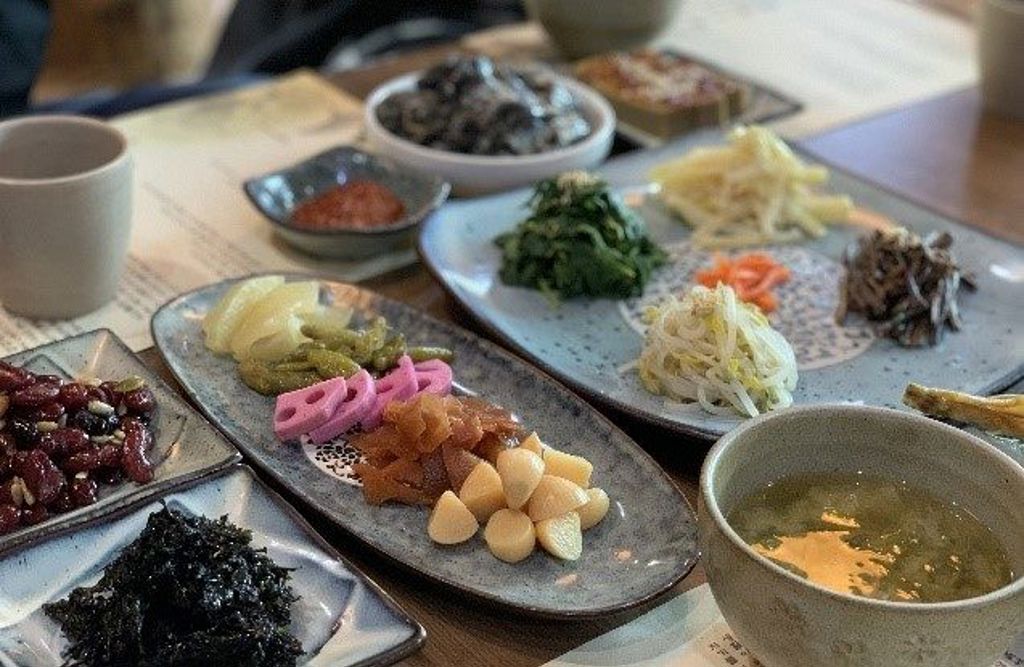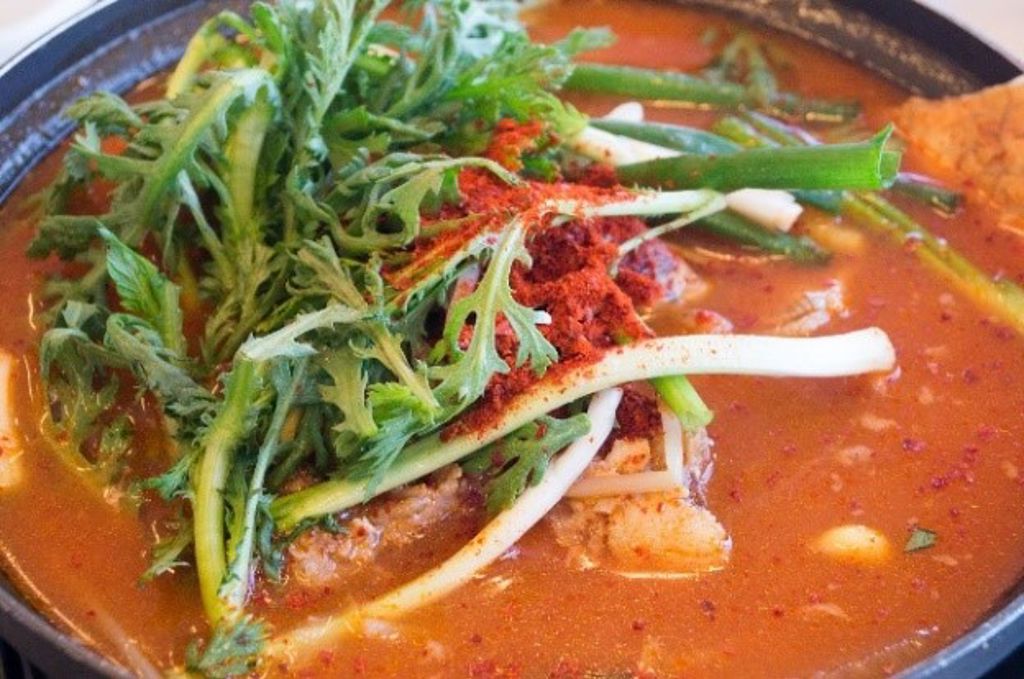This article was first published on Asia Pacific Food Industry.
High consumption of vegetables in Korea
The movie Minari has recently been in the global spotlight, depicting the story of a Korean family that moves to settle in America in the 1980s. While the father plants Korean vegetables, the grandmother plants Minari seeds brought from her home country. It is interesting that the story centres on Korean vegetables and audiences are curious to know what is so special about them.
A typical Korean dining table consists of several vegetable side dishes, known as Namul Banchan are accompanied by main dishes, rice and soup. Koreans have always believed that side dishes such as vegetables highlight the taste of the main dishes and offer a healthy combination.

Common Korean meal, with Namul Banchan
Source: Pixabay
For instance, Minari has a strong scent which helps to reduce any fishy smells, so it is widely used in Korean spicy fish stew.

Korean spicy fish stew with minari
Source: Pixabay
Namul Banchan, shelf-stable packaged vegetables offers potential as global K-food
The vegetable side dishes included within Korean cuisine are repositioned as plant-based K-food to attract global consumers. Namul Banchan is usually home-made and consumed at home. However, brands have developed various packaged versions due to the rapidly increasing market size. As people visited restaurants less frequently during the pandemic, sales of packaged Banchan rose as consumers shifted from foodservice to home consumption. According to one leading convenience store in South Korea, sales of Banchan increased by 40% in 2020 and the number of Banchan products extended to more than 120, seeing 25% growth compared with 2017. The increase in the number of working women has also driven growth for packaged Banchan.
Japan also saw a similar growth pattern for side dishes over the last decade with increase in convenience stores, single households and working women accounting for most sales. Due to the trend towards packaged side dishes in Asia for convenience reasons, Korean players are taking the opportunity to introduce Korean Banchan as healthy plant-based K-food to global consumers, rather than just playing on the interesting food culture within Asia.
CJ Cheiljedang’s Bibigo Banchan brand expanded its portfolio, according to its monthly sales in January 2020 were 50% higher compared to the previous year. With Bibigo’s strong reputation in Asia Pacific, the company is expected to expand its portfolio globally to deliver the culture of Korean side dishes with the concept of convenience and health.
Start-up players manufacturing shelf-stable Namul Banchan are also set to do well. Vegetables are perishable, and whilst they are usually stored chilled, shelf-stable canned Namul vegetables are expected to make it easier for young domestic consumers to purchase such products and also develop the potential to expand the global market. Also, some sauce manufacturers are developing the global market to help foreigners cook this dish easily at home.
Ordinary Korean meals are repositioned as plant-based foods globally
K-food is valued for its traditional distinct taste but its perception has evolved - Korean side dishes are now also appreciated as well-balanced plant-based health foods. With the trend towards sustainable lifestyles, more people are looking towards plant-based foods to be conscious consumers and it is perfect for flexitarians too. As K-food is expanding globally, players are focusing on how to make local consumers feel comfortable with it by providing a background to Korean cuisine, with increased emphasis on the health benefits and/or its sustainability.

Kimchi
Source: Pixabay
For instance, Kimchi is a traditional Korean pickle and although it is a very ordinary food to Koreans, it has not been very well-received by foreigners so far due to its unfamiliar taste and strong smell. However, players are currently tweaking the concept of Kimchi when introducing it abroad. As Kimchi boosts the immune system through the fermentation process, players are attracting global consumers with this health benefit. Further, some players have tried to make vegan Kimchi by replacing the fish sauce with vegetable extracts to maximise its positioning as a plant-based food.
Plant-based K-food actively extends beyond meals to a snack option
The introduction of Banchan will lead to more interest in healthy K-food globally. Extension from meals to plant-based appetisers and snacks is likely to be under the spotlight. Based on the popularity of fried/baked seaweed in Asian countries, dry-fried vegetables called ‘Bugak’ have been newly introduced as traditional Korean healthy snacks. According to Euromonitor International, vegetables, pulse and bread chips in Asia Pacific recorded 7% value growth during 2020, which shows Asian consumers are becoming more interested in healthy snacking. Vegetable chips could be a good alternative to indulgence foods.

Vegetable chips, ‘Bugak’
Source: Euromonitor International
With more global consumers interested in consuming plant-based foods for health, sustainability reasons and reducing intake of animal protein, creative ideas are essential to attract consumers to plant-based foods. In this vein, original K-food is being marketed to global consumers as healthy and sustainable plant-based food, beyond its appeal due to its taste and as a side dish.
